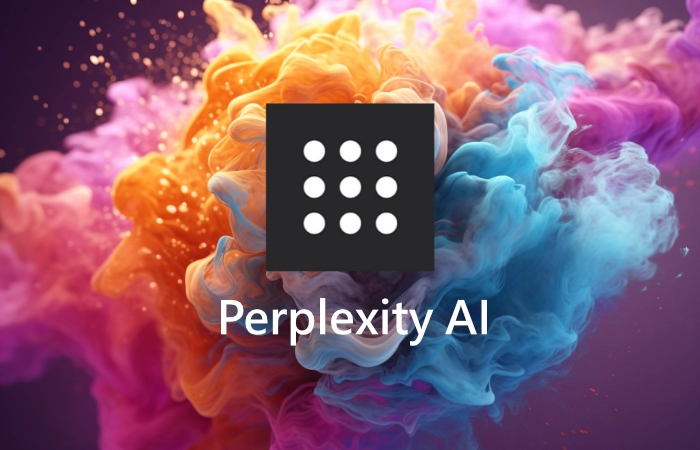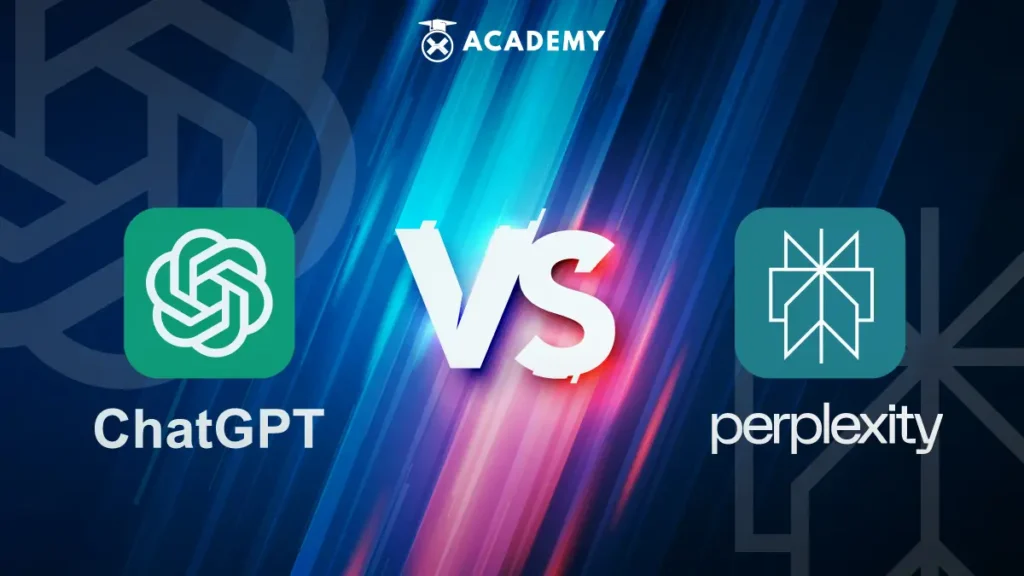Dive into our critical examination of Perplexity ai vs chatgpt to determine which model best serves your AI needs.
When it comes to Artificial Intelligence (AI), Perplexity AI and Chatgpt are two leading solutions renowned for their capabilities in natural language processing and understanding. But what distinguishes them, and how can we determine which is better suited to our needs? Let’s delve deeper to understand these cutting-edge technologies.
What is Perplexity AI?
Perplexity AI is a form of AI that uses perplexity as a measure of how well a probability model predicts a sample. It’s essentially used to quantify the level of uncertainty a model has in predicting the next word in a sequence. This AI is mainly employed in language models where it aids in assessing how well the model understands the language.

Advantages of Perplexity AI
- Perplexity AI provides an objective and standardized metric for quantifying language model performance.
- It helps in tuning and improving models, leading to more accurate predictions.
- Perplexity AI is language-independent and can be used for any language model.
- The perplexity measure provides valuable insights into language structure and semantics.
- It helps in identifying patterns and sequences that a human eye might miss.
- Perplexity AI ensures the development of more effective and efficient language models.
- It is beneficial in domains beyond language modeling, such as image captioning and automatic speech recognition.
- Perplexity AI expands its versatility and utility.
Disadvantages of Perplexity AI
- Perplexity AI can be overly sensitive to rare words.
- This can cause the perplexity score to skyrocket in real-world applications.
- Skewed evaluations may result from this sensitivity to unknown words.
- One drawback is the potential for exaggerated perplexity scores due to rare words.
Features of Perplexity AI
Perplexity AI boasts a number of standout features that facilitate its pivotal role in language modeling and beyond.
- Probabilistic Modeling: It uses probabilistic modeling to predict the likelihood of a sequence of words, making it an essential tool for language prediction tasks.
- Versatility: The technology is language-agnostic, making it versatile and applicable across different language models and domains.
- Insight Generation: Its ability to quantify uncertainty provides valuable insights into the complexity and structure of language data.
- Improvement and Tuning: It serves as a useful metric in the tuning and improvement of models, leading to more precise and accurate predictions.
- Handling Rare Words: Although its sensitivity to rare words can lead to inflated perplexity scores, this feature can also be advantageous by highlighting areas where the model may need further training or adjustment.
What is ChatGPT?

ChatGPT, developed by OpenAI, is a state-of-the-art language model that utilizes machine learning to generate human-like text. It’s designed to provide detailed responses, even to intricate queries, making it ideal for use in chatbots and virtual assistants.
Advantages of ChatGPT
- ChatGPT excels in generating highly coherent and contextually relevant responses.
- It has the capacity to learn and adapt over time, continuously improving the quality of its responses.
- The system becomes more refined and effective as more data is fed into it.
- ChatGPT is capable of producing human-like responses that are difficult to differentiate from those of a real person.
- It is versatile and can be used in various applications, including customer service chatbots, language translation, and more.
Disadvantages of ChatGPT
- The system may generate inappropriate or offensive content if trained on biased or problematic data.
- ChatGPT can sometimes produce irrelevant or nonsensical responses, especially when faced with highly complex queries.
- The system may struggle to understand and respond accurately to colloquial language and slang.
Features of ChatGPT
- Contextual Understanding: One of the key features of ChatGPT is its ability to understand the context of a conversation. It can analyze previous interactions and provide responses based on that context, enabling a more natural and flowing conversation.
- Multi-turn Dialogue: ChatGPT can handle multi-turn dialogues, which makes it ideal for maintaining long, intricate conversations. This capability enhances user engagement and satisfaction.
- Scalability: ChatGPT can handle a high volume of queries without compromising on quality. It can be scaled up or down depending on the demand, making it an ideal solution for businesses of all sizes.
- Language Generation: As a language model, ChatGPT’s primary feature is its capacity to generate human-like text. It can generate comprehensive and detailed responses, articulating complex ideas with clarity.
- Adaptability: It is capable of learning from its mistakes and improving over time. The model adapts to the type of language and style used by the person interacting with it, thereby providing a personalized experience.
Perplexity AI vs ChatGPT: A Comparative Analysis

Now that we have a basic understanding of both Perplexity AI and ChatGPT, let’s compare these two language models and see how they fare against each other in various aspects.
Performance on Language Modeling Tasks
Perplexity AI is mainly used for evaluating the performance of language models, whereas ChatGPT is a language model itself. Therefore, in terms of performance on language modeling tasks, it can be said that ChatGPT has the edge over Perplexity AI.
Accuracy and Quality of Responses
As mentioned earlier, Perplexity AI provides valuable insights into language structure and semantics. However, when it comes to generating responses, ChatGPT’s ability to produce human-like text gives it an advantage over Perplexity AI.
ChatGPT’s responses are more coherent and contextually relevant, making it a better choice for applications where generating accurate and high-quality responses is crucial.
Versatility and Adaptability
Perplexity AI is language-independent, making it suitable for any language model. However, ChatGPT’s adaptability to different styles and types of language, along with its ability to learn from interactions, gives it an edge over Perplexity AI in terms of versatility.
Ease of Use
While both Perplexity AI and ChatGPT require some level of technical expertise, ChatGPT is relatively more user-friendly as it can be easily integrated into existing systems. On the other hand, using Perplexity AI requires more knowledge and understanding of language modeling techniques.
Potential for Bias
Both Perplexity AI and ChatGPT can be prone to bias if trained on biased or problematic data. However, since ChatGPT is a language model itself, it may face more scrutiny in this aspect. Perplexity AI, on the other hand, is used solely for evaluating language models and may not be as widely scrutinized.
What Sets Them Apart?
- Perplexity AI is primarily used for evaluating language models and predicting the next word in a sequence.
- ChatGPT, on the other hand, is designed to generate human-like text in response to provided input.
- These two AI models have different intended use cases, showcasing the versatility of AI technology.
- It is important to choose the right tool for each specific task, considering the distinct applications of AI.
| Perplexity AI | ChatGPT | |
| Purpose | Evaluating language models | Generating human-like text |
| Performance | Evaluative | Generative |
| User-friendliness | Requires technical knowledge | Easier integration |
| Versatility | Language-independent | Adapts to different styles |
| Bias Potential | Not widely scrutinized | Faces more scrutiny |
| Use Cases | Model Testing | Customer Service, Translation, etc. |
Read More : EMPOWER YOUR LEARNING WITH AI TOOLS: BLESSING FOR STUDENTS
Market Share
In terms of market share, both Perplexity AI and ChatGPT have a significant presence in various industries that utilize natural language processing technology. However, owing to its vast capabilities and advanced AI algorithms, ChatGPT has gained more popularity and is extensively used in virtual assistants, chatbots, and customer service applications.
On the other hand, Perplexity AI’s primary use case in language model evaluation means it has a more niche market compared to ChatGPT.
Future Outlook
As the field of AI continues to advance, we can expect both Perplexity AI and ChatGPT to evolve and improve in their respective domains. With more research and development, these AIs will continue to push the boundaries of natural language processing, making them valuable tools for businesses and organizations across various industries.
The future looks bright for both Perplexity AI and ChatGPT as they contribute towards enhancing human-AI interactions and shaping the future of technology.
So, whichever AI you choose for your needs, know that you’re investing in a promising and ever-evolving field of technology. Overall, both Perplexity AI and ChatGPT have their own unique strengths and applications – making them essential technologies to consider when it comes to natural language processing and understanding.
As they continue to advance and improve, we can expect these AIs to play an even more significant in shaping the future of AI and its applications in various industries.
By understanding their differences and capabilities, we can make informed decisions on which AI is best suited for our specific needs. As technology continues to advance, it’s crucial to keep up with these developments and embrace innovative solutions that can greatly benefit our businesses and society as a whole.
Proudly powered by Ultimate Blog Hub

